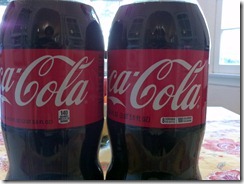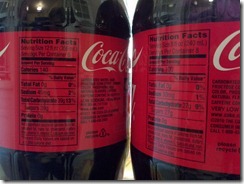Seriously, suggesting that Product X is a good source of calcium is akin to stating that gin is a good source of water. Certainly, drinking 16 ounces of gin could be one way of getting a “serving” of water toward your daily quota. But is it the best way? Making gin your sole source of water would have disastrous consequences, at least for your liver. Probably also for your relationships and career, but that is another issue altogether.
A list of other candidates for a “good source” of water would necessarily include espresso, which is also a diuretic. This is the same sort of logic that many mega-brand corporate “food” packagers appear to follow when making nutritional claims for their products. Especially, it seems, those marketed for children and women. Women get hit on two ends, since the industry appears to have a relatively sexist bent, because they are perceived as either mothers or dieters and little else. Men get off relatively unscathed because it is presumed, I imagine, that they simply don’t feed themselves or care. Nothing is pushed harder in the misleading nutritional arena than kid food, however, which is where the potential for harm is the greatest.
Before I move too far away from good sources of water, however, I think it an opportune time to mention the kid-friendly Coca-Cola company’s recent label modification. See if you notice the “healthier” bottle in this picture:

You may see, if you look in the little white box located below the “l” in Cola, that the bottle on the right claims fewer calories per serving. Yet the labels seem to be for an identical product. How is this possible? I present exhibit B, otherwise known as the back of the bottle, where the legally required nutrition information is printed:

That’s right. If you look closely, you will notice the now frequent tactic of simply reducing the serving size in order to achieve a healthier appearance. The product is just as bad for you now as it was before, but the label makes it seem less so. Reducing the serving size also allows Coca-Cola to market itself not just as LOW SODIUM as it did before, but now as VERY LOW SODIUM. Of course, the claim that it contains EXTREME HIGH FRUCTOSE CORN SYRUP is not a label requirement, though perhaps it should be.
The real question is not whether people tend to drink the smaller serving size (which I doubt, aside from my wife who seems perfectly content with half a glass), but whether the illusion of fewer calories is actually encouraging increased consumption of an unhealthy beverage.
Nutritional Density
What we really need to discuss when considering the vitamin and mineral content in packaged food is not whether the product is a good source of a single nutrient, but what the product offers for overall nutritional value. You have to compare the “values” of fats, sugars, carbohydrates and sodium, which you want to be a relatively low percentage, to the values of anything that your body actually requires to keep operating at a high level of efficiency, such as protein, vitamins and minerals.
While some carbs and fats are necessary components of a healthy diet, they are typically found in exponentially higher amounts in processed foodstuffs than anything that is going to, for instance, keep you healthy. Elevated levels of sugar and sodium may make a canned or boxed product taste more palatable, but these levels will also slowly kill you if you try living off of these products. Which does lend credence to the theory that some in the food industry simply do not care about the public health. Did I just call that a theory? Sometimes I simply crack myself up.
